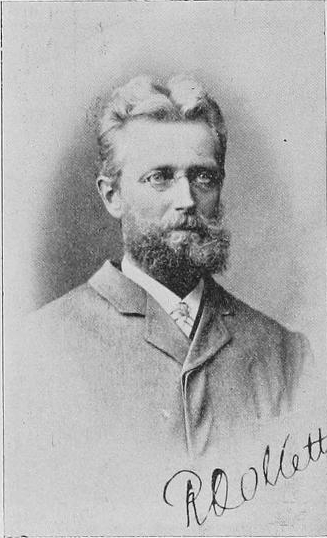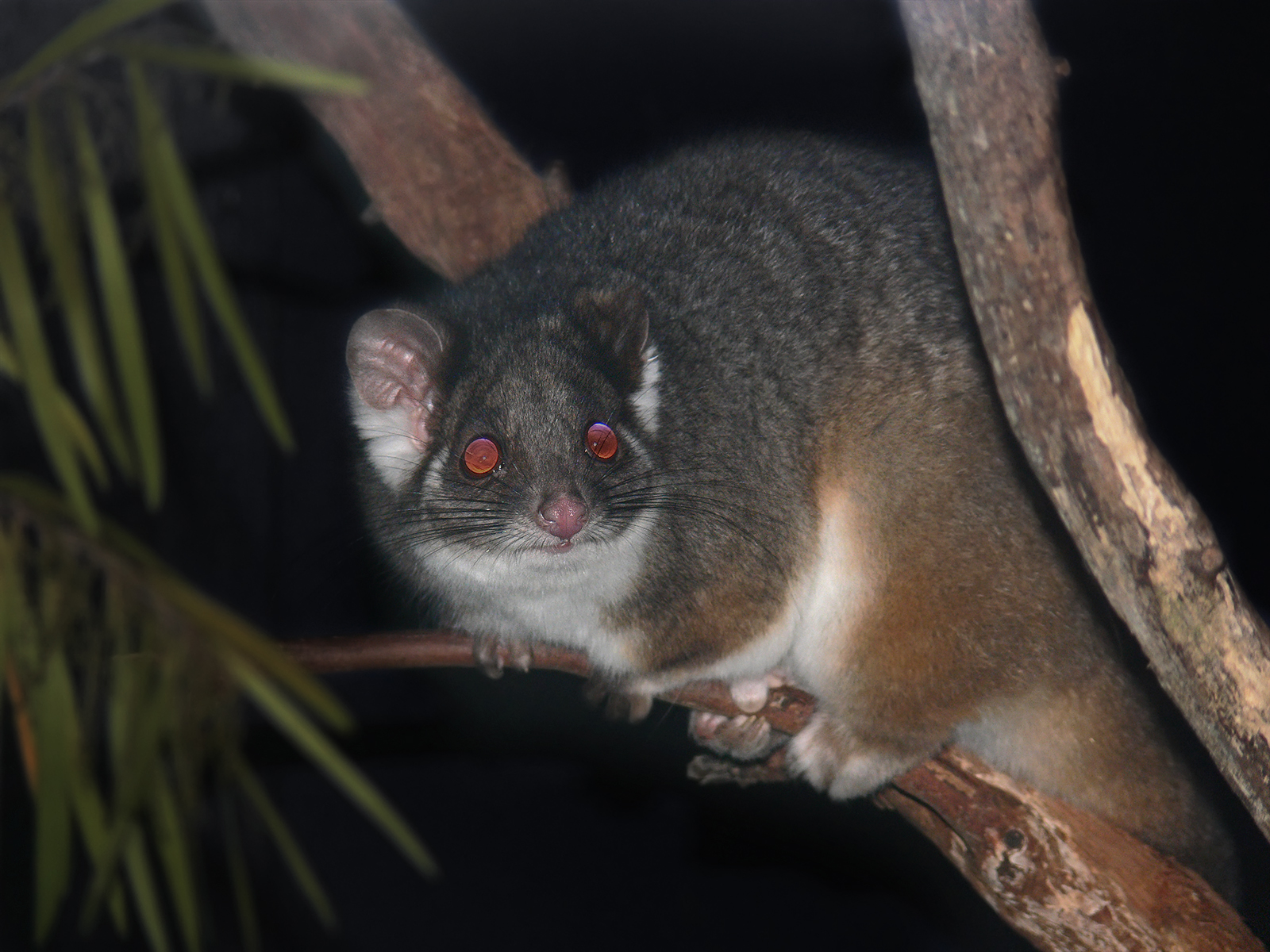|
Green Ringtail Possum
The green ringtail possum (''Pseudochirops archeri'') is a species of ringtail possum found only in northern Australia. This makes it unique in its genus, all other members of which are found in New Guinea or nearby islands. The green ringtail possum is found in a tiny area of northeastern Queensland, between Paluma and Mount Windsor Tableland. The green ringtail possum gets its name from its fur, which does indeed have a greenish tinge. In reality the fur is olive grey, but it is grizzled with silver, yellow and black hairs, which makes it appear green. It is nocturnal, solitary, and arboreal. It feeds mostly on leaves and is one of the few species that can eat the leaves of the stinger plant (''Dendrocnide moroides'') which can cause extreme pain with human casualties needing to be hospitalised. It also engages in a practice called coprophagy Coprophagia () or coprophagy () is the consumption of feces. The word is derived from the grc, κόπρος , "feces" and , "to ea ... [...More Info...] [...Related Items...] OR: [Wikipedia] [Google] [Baidu] |
Robert Collett
Robert Collett (2 December 1842 – 27 January 1913) was a Norwegian zoologist. Collett was director and curator of the Zoological Museum at University of Oslo. Robert Collett was born at Christiania (now Oslo), Norway. He was the eldest child of Professor Peter Jonas Collett (1813–51) and Camilla Collett (1813–95). His maternal uncles included Oscar and Henrik Wergeland, and his paternal uncles included Peter Severin Steenstrup. He had three younger brothers, including the writer and historian, Alf Collett. He never married.Robert Collett University of Oslo He attended the Latin School in and was a fellow in zoology at the |
Ringtail Possum
Pseudocheiridae is a family of arboreal marsupials containing 17 extant species of ringtailed possums and close relatives. They are found in forested areas and shrublands throughout Australia and New Guinea. Characteristics Physically, they appear very similar to the pygmy possums, except for their greater size. Even so, they are relatively small animals, with the largest being cat-sized, and they weigh between 200 grams and 2 kilograms. They have grasping hands and feet with opposable first toes on their hindfeet, and, in all species save the greater glider, a prehensile tail. They are nocturnal, with large eyes. All species feed almost entirely on leaves. To enable them to digest this tough and fibrous food, they have an enlarged cecum containing fermenting bacteria, and, like rabbits, they are coprophagous, passing food through their digestive tracts twice. Their teeth include a battery of grinding molars, and they lack lower canines. Their dental formula is: Most are ... [...More Info...] [...Related Items...] OR: [Wikipedia] [Google] [Baidu] |
Australia
Australia, officially the Commonwealth of Australia, is a Sovereign state, sovereign country comprising the mainland of the Australia (continent), Australian continent, the island of Tasmania, and numerous List of islands of Australia, smaller islands. With an area of , Australia is the largest country by area in Oceania and the world's List of countries and dependencies by area, sixth-largest country. Australia is the oldest, flattest, and driest inhabited continent, with the least fertile soils. It is a Megadiverse countries, megadiverse country, and its size gives it a wide variety of landscapes and climates, with Deserts of Australia, deserts in the centre, tropical Forests of Australia, rainforests in the north-east, and List of mountains in Australia, mountain ranges in the south-east. The ancestors of Aboriginal Australians began arriving from south east Asia approximately Early human migrations#Nearby Oceania, 65,000 years ago, during the Last Glacial Period, last i ... [...More Info...] [...Related Items...] OR: [Wikipedia] [Google] [Baidu] |
Pseudochirops
False ringtail possums (''Pseudochirops'') are members of a genus of marsupial in the family Pseudocheiridae. It contains the following species: *D'Albertis's ringtail possum, ''Pseudochirops albertisii'' *Green ringtail possum, ''Pseudochirops archeri'' *Plush-coated ringtail possum, ''Pseudochirops corinnae'' *Reclusive ringtail possum, ''Pseudochirops coronatus'' *Coppery ringtail possum The coppery ringtail possum (''Pseudochirops cupreus'') is a species of marsupial in the family Pseudocheiridae. It is found in Indonesia and Papua New Guinea. It is known as ymduŋ; bald, kagm, kas-gs, tglem-tud in the Kalam language of Papua N ..., ''Pseudochirops cupreus'' References Possums Marsupial genera Taxa named by Paul Matschie Taxonomy articles created by Polbot {{Diprotodont-stub ... [...More Info...] [...Related Items...] OR: [Wikipedia] [Google] [Baidu] |
New Guinea
New Guinea (; Hiri Motu Hiri Motu, also known as Police Motu, Pidgin Motu, or just Hiri, is a language of Papua New Guinea, which is spoken in surrounding areas of Port Moresby (Capital of Papua New Guinea). It is a simplified version of Motu, from the Austronesian l ...: ''Niu Gini''; id, Papua, or , historically ) is the List of islands by area, world's second-largest island with an area of . Located in Oceania in the southwestern Pacific Ocean, the island is separated from Mainland Australia, Australia by the wide Torres Strait, though both landmasses lie on the same continental shelf. Numerous smaller islands are located to the west and east. The eastern half of the island is the major land mass of the independent state of Papua New Guinea. The western half, known as Western New Guinea, forms a part of Indonesia and is organized as the provinces of Papua (province), Papua, Central Papua, Highland Papua, South Papua, Southwest Papua, and West Papua (province), West ... [...More Info...] [...Related Items...] OR: [Wikipedia] [Google] [Baidu] |
Island
An island (or isle) is an isolated piece of habitat that is surrounded by a dramatically different habitat, such as water. Very small islands such as emergent land features on atolls can be called islets, skerries, cays or keys. An island in a river or a lake island may be called an eyot or ait, and a small island off the coast may be called a holm. Sedimentary islands in the Ganges delta are called chars. A grouping of geographically or geologically related islands, such as the Philippines, is referred to as an archipelago. There are two main types of islands in the sea: continental and oceanic. There are also artificial islands, which are man-made. Etymology The word ''island'' derives from Middle English ''iland'', from Old English ''igland'' (from ''ig'' or ''ieg'', similarly meaning 'island' when used independently, and -land carrying its contemporary meaning; cf. Dutch ''eiland'' ("island"), German ''Eiland'' ("small island")). However, the spelling of the word ... [...More Info...] [...Related Items...] OR: [Wikipedia] [Google] [Baidu] |
Queensland
) , nickname = Sunshine State , image_map = Queensland in Australia.svg , map_caption = Location of Queensland in Australia , subdivision_type = Country , subdivision_name = Australia , established_title = Before federation , established_date = Colony of Queensland , established_title2 = Separation from New South Wales , established_date2 = 6 June 1859 , established_title3 = Federation , established_date3 = 1 January 1901 , named_for = Queen Victoria , demonym = , capital = Brisbane , largest_city = capital , coordinates = , admin_center_type = Administration , admin_center = 77 local government areas , leader_title1 = Monarch , leader_name1 = Charles III , leader_title2 = Governor , leader_name2 = Jeannette Young , leader_title3 = Premier , leader_name3 = Annastacia Palaszczuk ( ALP) , legislature = Parliament of Queensland , judiciary = Supreme Court of Queensland , national_representation = Parliament of Australia , national_representation_type ... [...More Info...] [...Related Items...] OR: [Wikipedia] [Google] [Baidu] |
Paluma, Queensland
Paluma is a town in the City of Townsville and a locality split between the City of Townsville and the Charters Towers Region in Queensland, Australia. In the , the locality of Paluma had a population of 68 people. It is in the Mount Spec Ranges and is the southernmost point of Townsville's heritage-listed Wet Tropics. Geography The town of Paluma is in the east of the locality in the of the locality within the City of Townsville. The residential land use is mostly within the town.The remaining to the west in the Charters Towers Region has a mix of uses including grazing on native vegetation, the Paluma Range National Park, the Paluma State Forest, and the Mount Zero Taravale Private Nature Reserve (operated by the Australian Wildlife Conservancy). The now-closed Greenvale railway line passed through the locality which was served by the now-abandoned Girrinjah railway station (). Paluma has the following mountains: * Black Hill () * Krugers Hill () * Mount Bitalli () ... [...More Info...] [...Related Items...] OR: [Wikipedia] [Google] [Baidu] |
Mount Windsor Tableland
Mount is often used as part of the name of specific mountains, e.g. Mount Everest. Mount or Mounts may also refer to: Places * Mount, Cornwall, a village in Warleggan parish, England * Mount, Perranzabuloe, a hamlet in Perranzabuloe parish, Cornwall, England * Mounts, Indiana, a community in Gibson County, Indiana, United States People * Mount (surname) * William L. Mounts (1862–1929), American lawyer and politician Computing and software * Mount (computing), the process of making a file system accessible * Mount (Unix), the utility in Unix-like operating systems which mounts file systems Displays and equipment * Mount, a fixed point for attaching equipment, such as a hardpoint on an airframe * Mounting board, in picture framing * Mount, a hanging scroll for mounting paintings * Mount, to display an item on a heavy backing such as foamcore, e.g.: ** To pin a biological specimen, on a heavy backing in a stretched stable position for ease of dissection or display ** To p ... [...More Info...] [...Related Items...] OR: [Wikipedia] [Google] [Baidu] |
Arboreal
Arboreal locomotion is the Animal locomotion, locomotion of animals in trees. In habitats in which trees are present, animals have evolved to move in them. Some animals may scale trees only occasionally, but others are exclusively arboreal. The habitats pose numerous mechanical challenges to animals moving through them and lead to a variety of anatomical, behavioral and ecological consequences as well as variations throughout different species.Cartmill, M. (1985). Climbing. In ''Functional Vertebrate Morphology'', eds. M. Hildebrand D. M. Bramble K. F. Liem and D. B. Wake, pp. 73–88. Cambridge: Belknap Press. Furthermore, many of these same principles may be applied to climbing without trees, such as on rock piles or mountains. Some animals are exclusively arboreal in habitat, such as the tree snail. Biomechanics Arboreal habitats pose numerous mechanical challenges to animals moving in them, which have been solved in diverse ways. These challenges include moving on n ... [...More Info...] [...Related Items...] OR: [Wikipedia] [Google] [Baidu] |
Dendrocnide Moroides
''Dendrocnide moroides'', commonly known in Australia as the stinging tree, stinging bush, Queensland Stinger or gympie-gympie, is a plant in the nettle family Urticaceae found in rainforest areas of Malaysia and Australia. It is notorious for its extremely painful and long-lasting sting. The common name gympie-gympie comes from the language of the Indigenous Gubbi Gubbi people of south-eastern Queensland. Description ''D. moroides'' is a straggly perennial understory shrub, usually flowering and fruiting when less than tall, but it may reach up to in height. It is superficially similar to '' Dendrocnide cordifolia'', with the most obvious difference being the point of attachment of the petiole to the leaf blade—where ''D. moroides'' is peltate, i.e. the stalk attaches to the underside of the leaf and not at the edge, ''D. cordifolia'' is cordate. The stem, branches, petioles, leaves, and fruits are all covered in stinging hairs. It has large, heart-shaped, simple leave ... [...More Info...] [...Related Items...] OR: [Wikipedia] [Google] [Baidu] |







